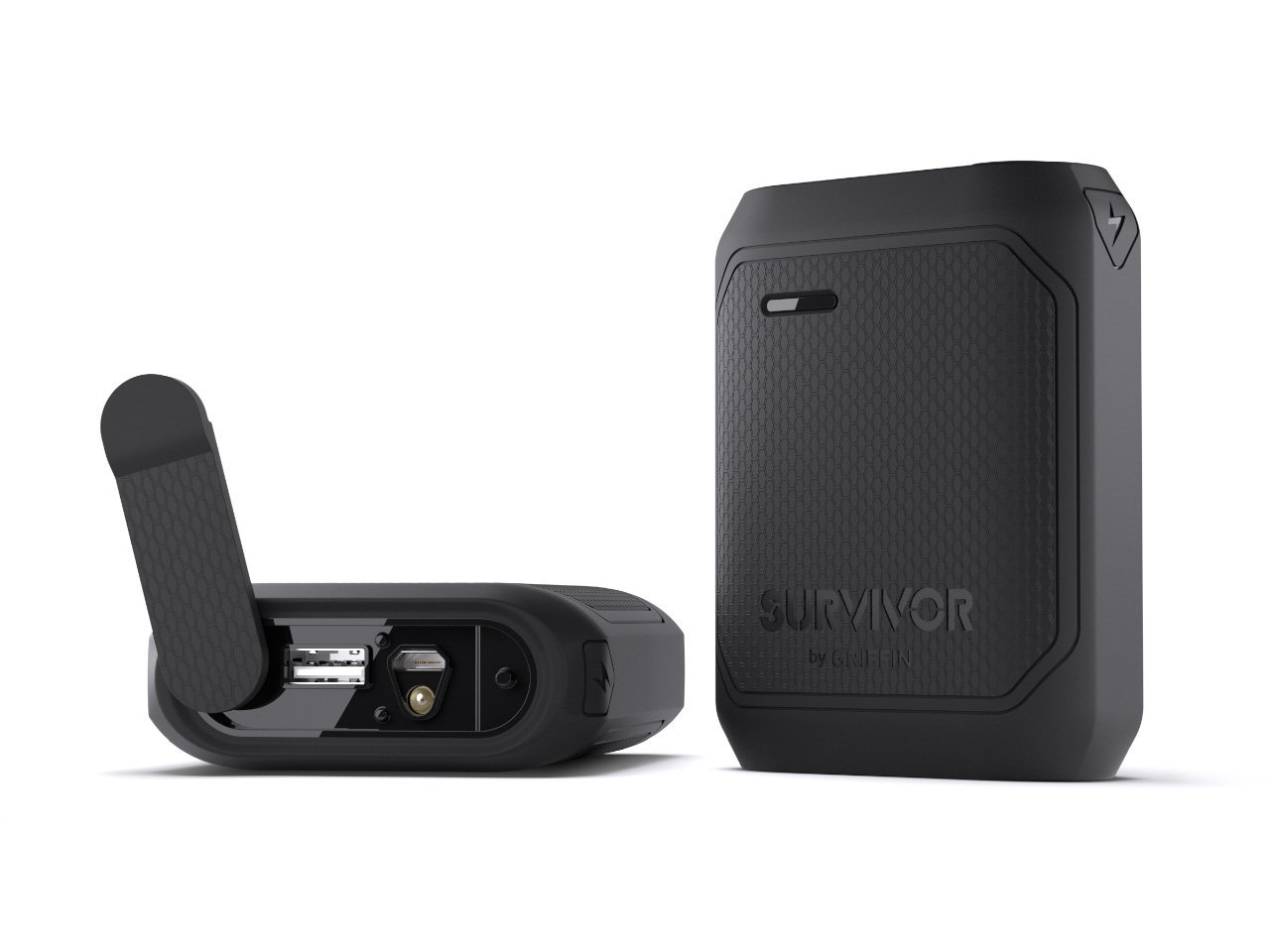Audyssey Audio Dock Air Speaker Review
/
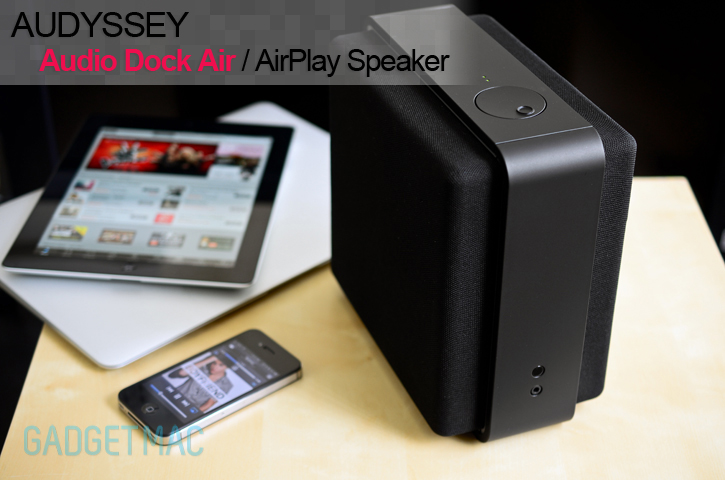
Audyssey is a household name when it comes to professional audio. The Audio Dock Air, also known as the Lower East Side Audio Dock, is Audyssey's third brainchild amongst a breed of impressively good sounding speakers, and the first to feature AirPlay for ultimate wireless music streaming. Audyssey's South Of Market Audio Dock and Lower East Side Media Speakers left us highly impressed and overindulged with exceptionally good sounding music. Naturally we're expecting Audyssey's Audio Dock Air to be just as great. Catch the full review right down below!
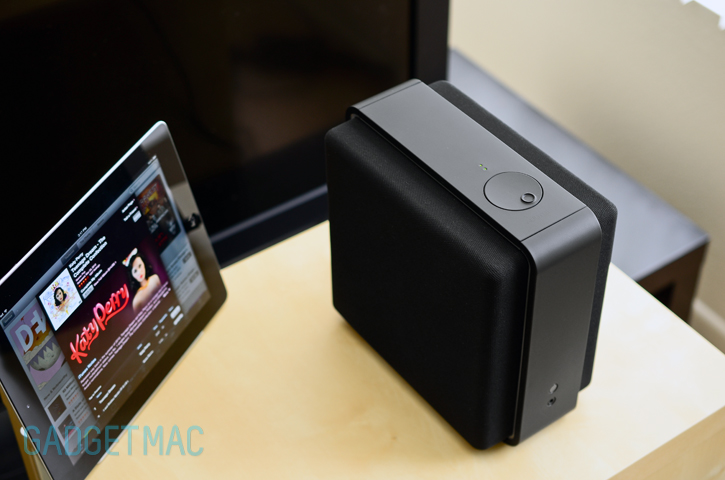
Audyssey speakers don't come cheap, as we've said before really good sound comes at a price. The Audio Dock Air will set you back $400 over at Audyssey and that's certainly a big price to pay for such a small speaker. But if you shop around, the Audio Dock Air can be had for $350 at Apple and Amazon. For reasons unbeknown to us, AirPlay speakers are an expensive bunch. The Audio Dock Air sure isn't the most expensive out of all the AirPlay speakers on the market today, and from what I've experienced, it sure can compensate for its expensive price tag with sound quality. There aren't any interesting accessories bundled with this speaker, other than a massive yet lightweight power brick and a 3.5mm to 3.5mm audio cable included, that's about all you get.

To put things into prospective, AirPlay is Apple's proprietary wireless streaming technology that uses your home WiFi network to wirelessly push audio from all iOS devices and Macs to an AirPlay featured speaker. In this case, the Audio Dock Air. Why not use Bluetooth? Simple, WiFi is more reliable and is capable of streaming uncompressed audio without degrading the quality whatsoever. It is as if you were to plug your audio source directly to the speaker itself. This all means Android and all non-AirPlay enabled devices cannot be used wirelessly with an AirPlay speaker. With that said, if you just so happen to want to use one of your non-AirPlay enabled gadgets, the Audio Dock Air does feature a 3.5mm audio input just for kicks.
The initial setup process isn't as easy as pairing devices over Bluetooth, but not all that hard if you follow the included instructions step by step. After several attempts and resetting, I was able to successfully pair the Audio Dock Air to my home WiFi network. You can do so directly from any iOS device or using your Mac. From here on end, the Audio Dock Air will always automatically connect itself to my network no matter what. And so far it has been very reliable and never once did it disconnect or stop playing my music.
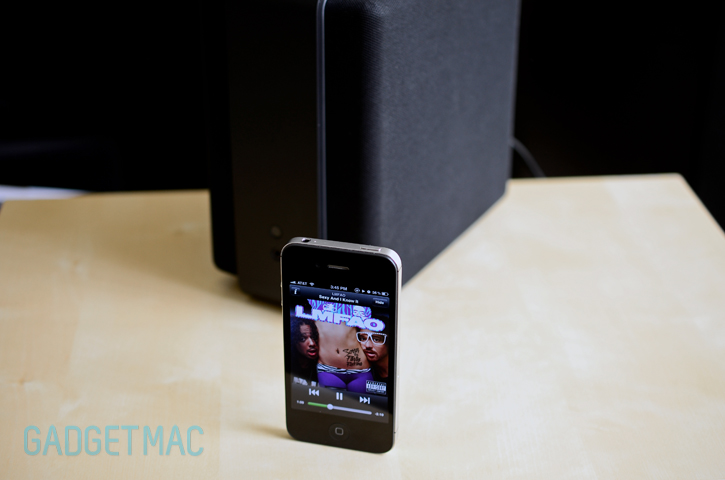
So far I definitely see the positive of using AirPlay for wireless music streaming. It's a big advantage over Bluetooth with superior audio quality and reliability. The only negative I've experienced using AirPlay is that it's a big laggy in terms of skipping tracks and starting to play music. The lag is a matter of a few seconds, however volume control seems to work instantly. With AirPlay you cannot adjust the volume using your Macs volume control but instead you'll be using either the on board volume and mute controls on the Audio Dock Air, or the volume slider in iTunes. It's worth noting that the Audio Dock Air is strictly meant to stream music over AirPlay and cannot be used as a wireless speaker for enjoying that movie you'll want to be watching as there is a considerable lag in audio unfortunately.
Other than using iTunes with the Audio Dock Air, other music players do not currently support AirPlay for wireless streaming. That means music services like Spotify won't work unless you're a premium subscriber and are using the Spotify app on an iOS device.
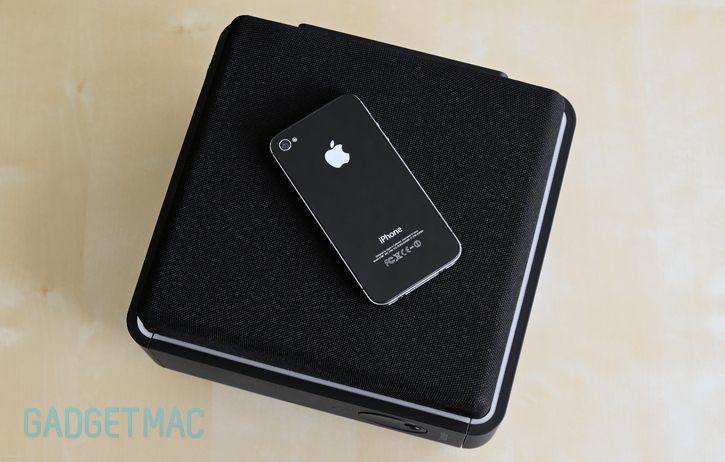

There's really nothing wrong with how this speaker is built. It feels sturdy when put on a table like a big vertical ice cube of black AirPlay enabled speaker. The gray plastic separating the two black mesh covered speaker sides from left to right has a nice subtle touch of silver trim seen from either side that relates to the iPhone 4/S design. While the Audio Dock Air isn't meant to be a portable wireless speaker, picking it up gives you the impression that your $400 weren't entirely used in the construction and designing as oppose to Audyssey's much more impressive Audio Dock. With that being said, the Audio Dock Air has a decent build quality for a non-portable speaker and it makes up for it with its elegant and classy design. Although not as striking as the Audio Dock, it isn't the ugliest AirPlay speaker around.
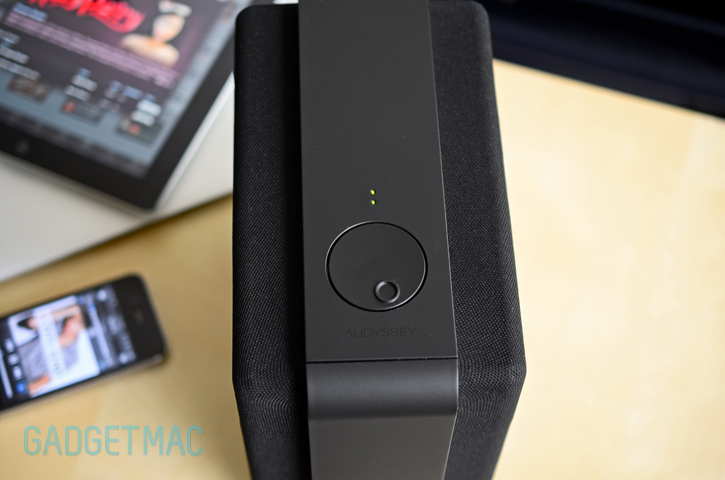
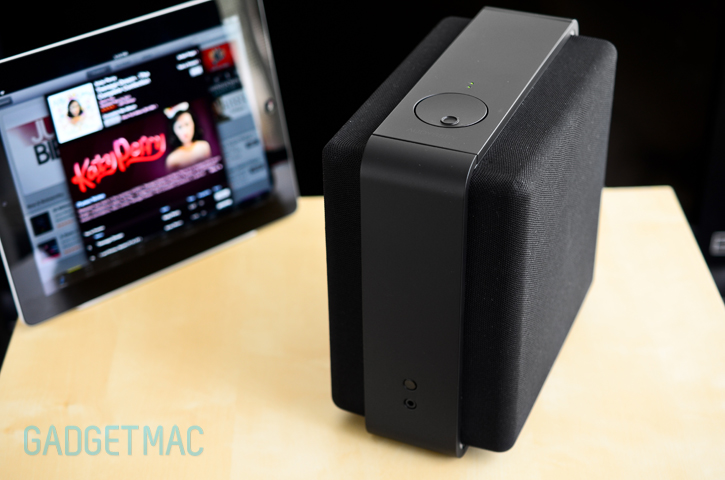

The Audio Dock Air features a volume control dial at the top which also serves as a mute button when clicked. There are two LED status indicators right above the volume control that indicate power and WiFi connection status. Two solid green lights means that you're all set to wirelessly stream audio goodness. If we look at the Audio Dock Air from the front we can see a 3.5mm headphone port just because as well as a useless IR receiver you won't be able to use because Audyssey decided at the last minute not to include a remote control like it does with the Audio Dock. The Audio Dock Air looks like it wasn't as well thought of as its larger counterpart. It has no power on/off switch, pull the plug to power it off. There's no standby mode to conserve energy and lower your monthly bill nor does it feature a charging dock for iOS devices or have a eye-catching LED volume gauge.
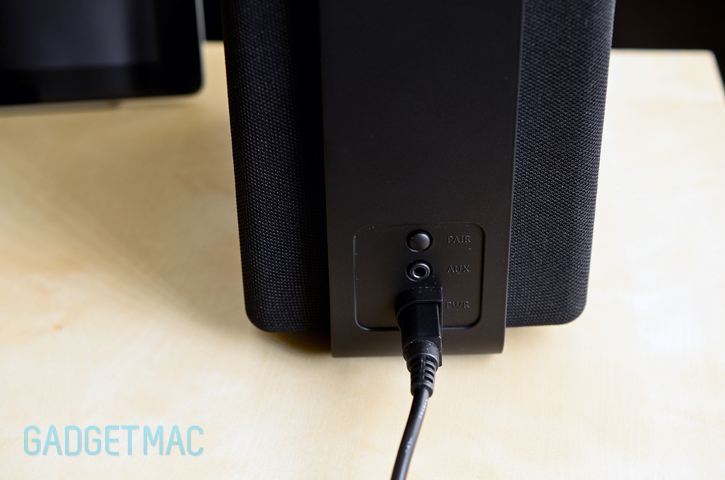
The Audio Dock Air looks to outperform any AirPlay speaker in this price range. Audyssey is the one and only capable of leaving out a dedicated subwoofer for a compact, and on the verge of portable speaker system with more energy to blow off most if not all who dare compete. In case you haven't picked this up by now, the Audio Dock Air does not have any docking capabilities for iPhones and iPods despite its name.
At $400, or better yet $300 at both Amazon and Apple, the Audio Dock looks to offer a better bang for your buck unless AirPlay and a bit more extra space are really essential to you. It also has the upper hand when it comes to tweaking the sound using a dedicated iOS app whereas with the Audio Dock Air you get what you hear whether you like it or not. Chances are you're going to like it though. In any case, don't buy directly from Audyssey because just about everywhere you go, their speakers run for much less. Sound quality comes next!
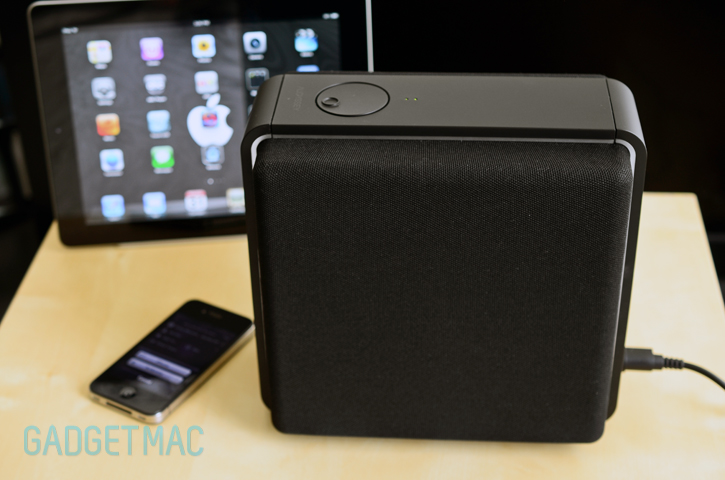

The Audio Dock Air may be small, but it delivers astonishing sound. I've never enjoyed a wireless speaker this much apart from Audyssey's Audio Dock. And again, Audyssey worked its magic, put in the research in developing not only good hardware to drive this amazing sound, but also proprietary software that works hand in hand to achieve such great feat. The Audio Dock Air boasts an incredible array of internal hardware, two .75-inch tweeters, two 3-inch midrange woofers and two 4-inch passive bass radiators. When you put all of these together, you get a rich sound signature full of detail. When it comes to highs, the Audio Dock Air really shines with live-like sparkling clear highs that translate into life-like vocals. So much that I'd say the highs are slightly oversaturated to the point where a bit of reduced treble would be perfect. In that regard, it's a shame you cannot adjust treble right there and then. Audyssey claims that the Audio Dock Air delivers balanced sound which isn't true as the highs are a bit too high.
The mids are a lot more controlled than the highs and offer very detailed and pronounced presence that let you hear every single instrument in detail. I have nothing bad to say about the mids, they're pretty much perfect they way they are. As for the lows, the Audio Dock Air will not disappoint people that love their bass. The bass response is downright awesome. Deep, thumpy and enough to vibrate your intestines. That pair of 4-inch passive bass radiators along with Audyssey's pixie dust covered BassXT technology reeks havoc putting the Beats By Dre iconic overpowering bass performance to real shame. What Audyssey has successfully achieved with its speakers docks is unimaginable. Your music won't sound as good in any other speaker dock of this kind, and I can bank on it.
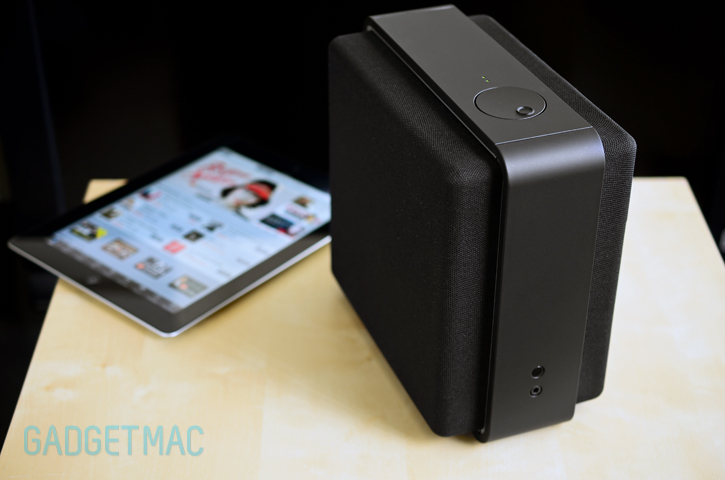
Cranking up the volume above midpoint has no affect on the sound quality and does not start distorting. Interestingly enough, in order to control the audio quality consistency, the Audio Dock Air will dramatically lower its bass response when setting the volume just above midpoint to avoid nasty distortion and overpowering the the rest of the sound spectrum. It's a shame that you're losing all that amazing bass at higher volumes for weaker bass, and that's something you should keep in mind. In comparison, the Audio Dock is more capable of handling high levels of sound having double the power of passive bass radiators and larger woofers. While I'm completely satisfied with the bass response and moderate listening levels, the Audio Dock bass performance is slightly more admirable overall. I've thrown the Audio Dock Air just about every music genre and it handled every single one of them brilliantly.
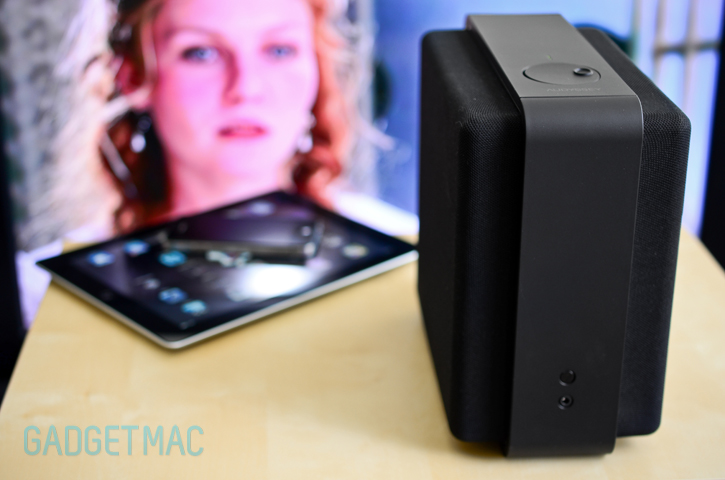
On an end note, it has been a great pleasure to have used the Lower East Side Audio Dock Air. It may not be a better speaker dock than Audyssey's South Of Market Audio Dock, but it's definitely one of the best AirPlay speakers that delivers powerful, brilliant sound at an insanely small package. We wouldn't necessarily recommend the Audio Dock at $400, but at $350 it's worth a solid look and our recommendation for a solid AirPlay speaker. This is wireless music streaming at its finest. If you don't care much about wireless AirPlay music streaming, then we highly recommend checking out the Editors' Choice awarded Audio Dock instead as it offers more for your money at a more affordable price tag.







